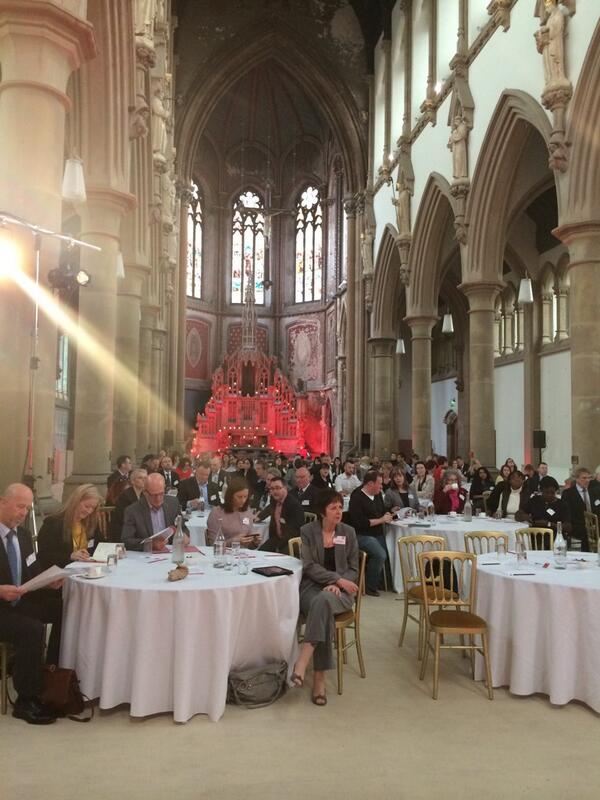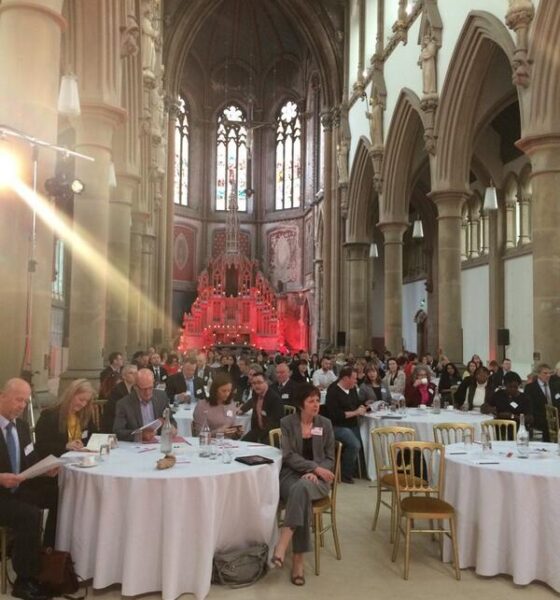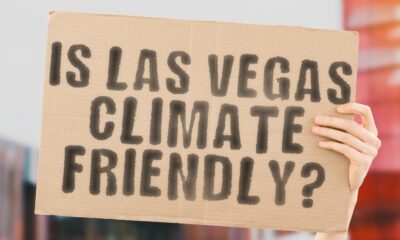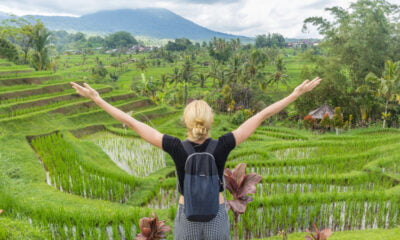

Economy
Responsible Tourism in Destinations (RTD8) conference: day one – morning
Leading figures from the travel and tourism industry gathered in Manchester on Thursday for the eighth international Responsible Tourism in Destinations (RTD8) conference. Here’s what was said in the morning session on day one.
For a review of the afternoon session on day one, see here.
Few events in the responsible tourism calendar are more hotly anticipated by the Responsible Tourism in Destinations conference. Twelve years on from its foundation in Cape Town, South Africa, the event has become a crucial platform for discussion – with this the eighth time it has taken place.
Masterminding the entire operation since its inception is Harold Goodwin, professor of responsible tourism at Manchester Metropolitan University’s Centre for Responsible Tourism – undoubtedly the leading academic in his field. Ably assisted by fellow RTD8 co-ordinator, VisitEngland’s Jason Freezer, Goodwin and his team were able to bring together an almost unrivalled mix of speakers and delegates – from national tourist boards to tour operators; scientists to consultants.
Coinciding with both English Tourism Week and Responsible Business Week, it is a chance for the industry to delve deep into the challenges of tourism development and management.
The setting was spectacular – Gorton Monastery, said to be Manchester’s answer to the Taj Mahal, no less. That was according to Paul Griffiths, chairman of the Gorton Monastery Trust (who also holds the impressive title of high sheriff of Greater Manchester). Telling the story of the building’s inspiring restoration, he said it was “one of world’s most endangered buildings” – and in the same category as Pompeii and India’s most famous landmark in that respect.
Kicking off the conference with the first session was James Berresford, chief executive of VisitEngland. He opened by noting that Gorton Monastery was not only spectacular but fitting. It “represents responsible tourism”, he said.
Berresford then went into some facts. The tourism sector in England is worth £106 billion – a figure that is expected to grow to £158 billion by 2020. On top of that, it employs 2.6 million people.
He explained how VisitEngland encourages people to cut out the environmental damage associated with flying and instead, holiday at home (Goodwin later described a campaign by the organisation on this very issue his favourite of all time). It’s “vital” that someone champions the value of tourism, Berresford added – as well as celebrating the fun.
Moving onto the topic of the conference itself, he described destination management as “not just marketing”. The very essence of tourism is about selling and encouraging great destinations, which brings about better visitor experiences, creates jobs, improves the quality of life for local people and allows the sector to grow sustainably.
If you have a thriving tourism industry, local people have a better quality of life, he said, therefore calling for a “360 degree” approach to destination management. He concluded by saying that ultimately, destination management will only succeed if local people are engaged in the process. The people and the destinations must be conjoined.
This exact theme was discussed in more detail in the panel discussion that followed Berresford’s thought-provoking opener.
Chrissie Gibson, director of the consultancy Connectivity Associates and a former town planner, spoke about how to get town planners involved in destination management. Stakeholder engagement was crucial, she said.
Aine Kearney then provided delegates with a fascinating overview of Northern Ireland’s tourism industry. She said the well-documented unrest in the country had dramatically set back tourism – perhaps by 20-25 years, compared to other countries in the UK.
But in its more recent history, it has sought to capitalise on tourism’s potential by attempting to understand what visitors wanted and what it could reasonably offer. This has led to popular signature projects like the Giant’s Causeway – which are then platforms for further investment and other projects.
Peter Lane, chair of British Destinations Executive, spoke of creating “reasonable, acceptable and more dynamic” destination management plans through organisation, knowledge and review.
Berresford then reiterated his point about the importance of communities and local people. He pointed towards the often-used phrase “Never make good out of anyone’s misfortune”, adding that the power of tourism is shown when a community suffers economically or environmentally. Some Cornish communities found this out first-hand when the rail link connecting them to the rest of the country was damaged by the floods. Only today has the line reopened, over two months since it was closed.
After this, John Swarbrooke, a colleague of Goodwin’s at the Centre for Responsible Tourism, gave a short speech about his career in the industry. His claim to fame is that he placed the first brown and white tourism signs that appear on motorways and so on, when they were trialled during his time working for Kent county council.
He also worked at Wigan Pier (and as a result, apparently never bought his own drink in pubs – the locals loved the attraction that much). Sadly, he said, Wigan didn’t use the pier as a platform for other projects, and it was forced to close down in 2007.
Swarbrooke’s entertaining 15 minutes preceded another panel discussion, this time on the future priorities of destination management organisations (DMOs) – the organisations responsible for the management and marketing of destinations.
Nick Brooks-Sykes from Bath Tourism Plus explained how Bath’s visitor economy was worth £357m a year, and argued that the town was the “birthplace of DMOs”. Social mingling in the 18th century came long before 21st century social media, he said.
Tony Gates, chief executive of the Northumberland national park, spoke about the role of national parks. They’re there to “conserve and enhance” the environment, culture and biodiversity; they promote “understanding and enjoyment” through visitor information and public access; and they provide “sustainable social and economic wellbeing” in local communities.
From a national park perspective to one of a city, Emma Tatlow from the Visit Lincoln Partnership – a relatively young DMO at just three years old – said how the organisation was tasked with changing the perception of Lincoln. Next year’s 800-year anniversary of the Magna Carta – one of only four surviving original copies is on show in Lincoln – is a big milestone for the area, she added.
Coming into the discussion very much from a global perspective, Nikki White, head of destinations and sustainability at ABTA, detailed how politicians from all over the world are approaching tourism.
White’s colleague at ABTA, Caroline Brown, then closed the morning session with a keynote speech about why destinations matter to ABTA agents and tour operators. With the UK the sixth biggest international tourism destination by visitor numbers and seventh by expenditure, she claimed it was essential that destinations are managed properly to ensure it stays among the leaders.
Further reading:
Manchester to host Responsible Tourism in Destinations conference
Sustainable tourism is an instrument to ‘protect nature and alleviate poverty’
VisitEngland: sustainability ‘secures a successful future’ for tourism
Travel Foundation: sustainable tourism will soon be ‘the only way to do business’
International Tourism Partnership: the hotels that are shaping the future of tourism


 Environment10 months ago
Environment10 months agoAre Polymer Banknotes: an Eco-Friendly Trend or a Groundswell?

 Environment12 months ago
Environment12 months agoEco-Friendly Home Improvements: Top 7 Upgrades for 2025

 Features9 months ago
Features9 months agoEco-Friendly Cryptocurrencies: Sustainable Investment Choices

 Features10 months ago
Features10 months agoEco-Friendly Crypto Traders Must Find the Right Exchange





























